
A 63-year-old woman presented for medical attention relating to the acute onset of an intensely pruritic, oozing eruption along the hairline, behind the ears and on the upper face. This eruption followed the first use of a new shampoo product

A 63-year-old woman presented for medical attention relating to the acute onset of an intensely pruritic, oozing eruption along the hairline, behind the ears and on the upper face. This eruption followed the first use of a new shampoo product
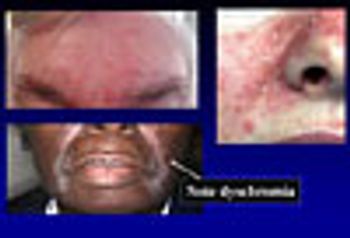
Red face. Roseacea? Lupus? Sunburn? No, it's seborrheic dermatitis. Here's how to tell.

A 56-year-old woman insisted on an “emergency” appointment due to the relentless appearance of pruritic skin “lesions” on the arms and legs. She admitted to manipulating the skin (scratching, picking, gouging) in an attempt to lessen associated itching.

Here: a review of the potential health effects of bed bugs, diagnosis and treatment, and comments about future directions in bed bug control and public health efforts to manage the pest.
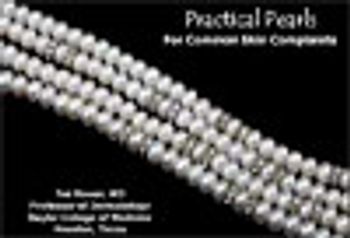
Seborrheic keratoses, cherry angiomas, sebaceous hyperplasia: Learn to identify these innocuous lesions common to aging skin.
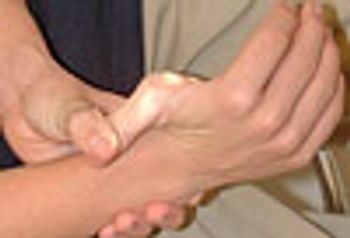
Joint hypermobility; “cigarette-paper” skin; keloid scars; and pectus and scoliosis: to what common diagnosis do these disparate findings in 3 different patients point? Click here for more details.
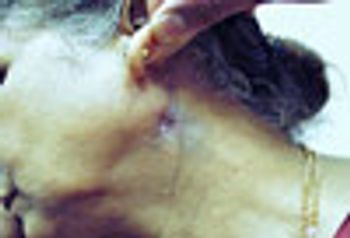
A 59-year-old woman presents for evaluation of a painful, draining neck lesion. She is a native of India and returns to her home country yearly to visit relatives.
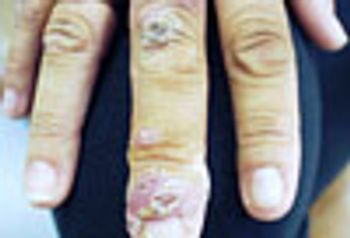
A 45-year-old woman noted painless, red, crusted papules on the hand. This was followed by the appearance of deep, slightly tender red nodules on the arm and ipsilateral axillary adenopathy.
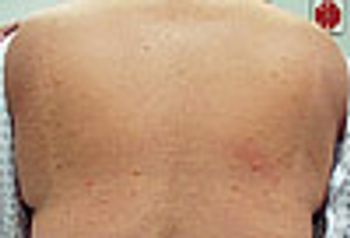
A 57-year-old obese woman with known and poorly controlled type 2 diabetes presented with the sudden onset of “yellow bumps all over.” Representative lesions on the back and elbows are shown.
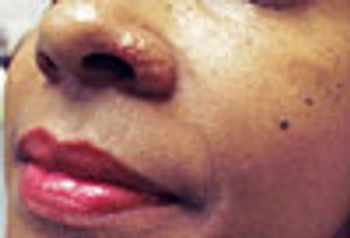
A 26-year-old African American woman presents for help with “pimples” on both sides of the nose. She is ostensibly healthy and takes no medications.

A 26-year-old woman notes the insidious onset of an abnormal nail. The nail plate gradually grew away from the underlying nail bed and then began to elevate in a tented fashion.
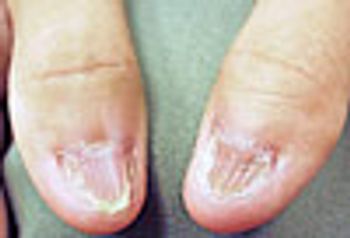
A 32 year-old man presents with deteriorating thumbnails. He is in good health except for a long-standing seizure disorder that is controlled with phenytoin.
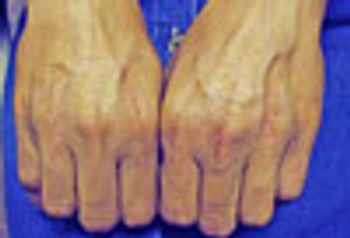
A 23-year-old man presented for medical attention with these mildly to moderately pruritic lesions located only on his hands. He was in good health and took no medications.
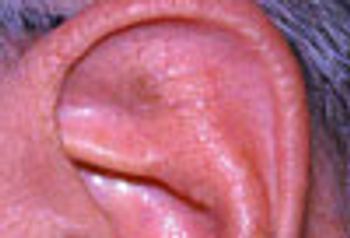
Skin lesions in the outer ear-the pinna, the concha, and the external auditory meatus-may be trivial or potentially malignant. Here we consider a flesh-colored swelling with a central white spicule; a tan papillary lesion; a fluctuant swelling; a red berry-like papule; an elevated pink lesion.

Benign skin lesions can arise in the outer ear as easily as in any other body part frequently exposed to the sun. Seborrheic keratosis may mimic malignant melanoma but is innocuous. Actinic keratosis is premalignant and should be excised, biopsied, and the site of excision monitored vigilantly.
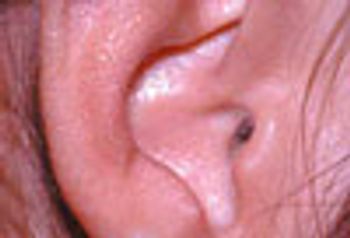
These innocuous lesions of the outer ear may arise spontaneously or after trauma or surgery. Both auricular seroma and pyogenic granuloma usually resolve satisfactorily after minor surgery, though they may recur.

Diagnostic challenge: Two case reports of easily treated and innocuous causes of lesions in the outer ear. Chondrodermatitis nodularis helicis is associated with long cellphone use. Verruca vulgaris is caused, like all other warts, by human papillomavirus.

A 58-year-old man presents for evaluation of a facial rash. He is convinced, from internet research, that he has systemic lupus erythematosus.
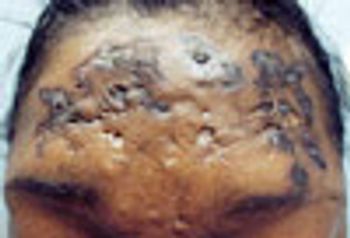
A 26-year-old African American woman was concerned about the gradual onset of mildly tender, but severely distressing facial lesions located on the face.
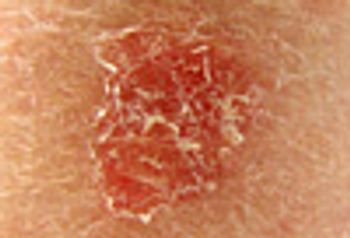
With no history of papulosquamous skin disease (eg, psoriasis), a solitary, well-demarcated, bright red scaly patch should suggest either superficial basal cell or in situ squamous cell carcinoma.
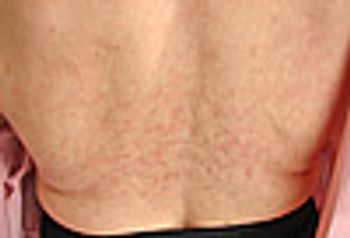
The husband of this 50-year-old obese woman noted that her back was discolored. Review of past medical history disclosed long-standing low back pain from partially herniated vertebral disks.
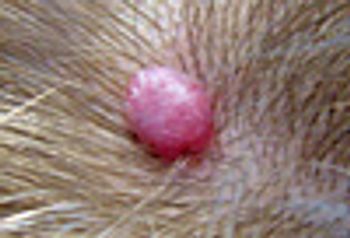
A 36-year-old woman notes the insidious onset of an asymptomatic lesion located on the scalp. Despite frequently hitting it with a comb or brush, it has never bled.

A 53-year-old woman felt the underwire in her bra stab the inframammary skin. She covered the ensuing shallow wound with antibiotic ointment under a bandage. The wound was slow to heal, and was ultimately replaced by a friable, oozing papule.

A 30-year-old woman rapidly developed an intensely pruritic eruption on both legs, that extended from the knees to the upper thighs.
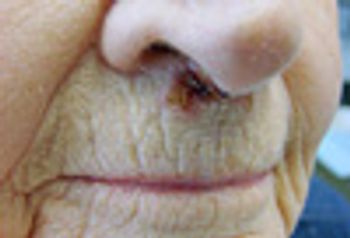
An 82-year-old woman presents with a persistent “face sore,” which she ascribed to repeatedly and frequently blowing her nose during a recent upper respiratory infection.